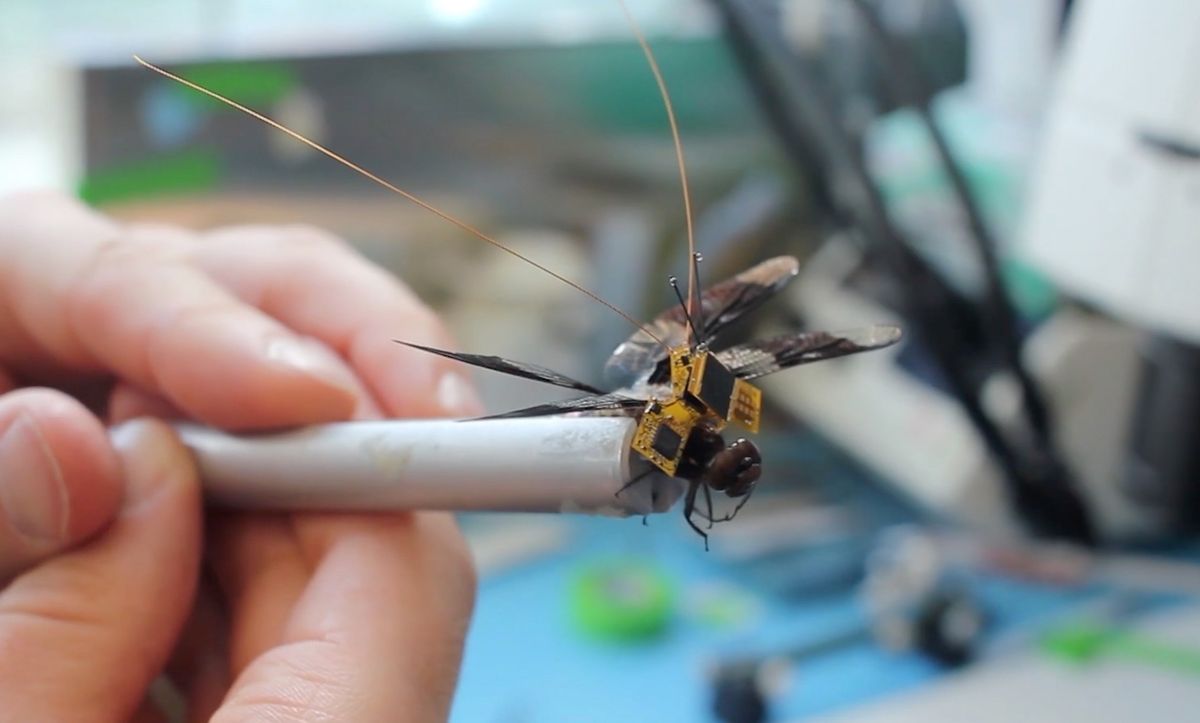In January, we wrote about a cybernetic micro air vehicle under development at Draper called DragonflEye. DragonflEye consists of a living, slightly modified dragonfly that carries a small backpack of electronics. The backpack interfaces directly with the dragonfly’s nervous system to control it, and uses tiny solar panels to harvest enough energy to power itself without the need for batteries.
Draper showed us a nifty looking mock-up of what the system might look like a few months ago, but today, they’ve posted the first video of DragonflEye taking to the air.
The unique thing about DragonflEye (relative to other cyborg insects) is that it doesn’t rely on spoofing the insect’s sensors or controlling its muscles, but instead uses optical electrodes to inject steering commands directly into its nervous system, which has been genetically tweaked to accept them. This means that the dragonfly can be controlled to fly where you want, without sacrificing the built-in flight skills that make insects the envy of all other robotic micro air vehicles.
It looks like the above video is mostly showing that the electronics and hardware can be interfaced to the insect while still allowing it to fly, so we may not be seeing the control system in action yet. Even so, this research seems to be moving along very, very quickly, and we’re not entirely sure when this video was shot, so our advice is to give every dragonfly you see zipping around outside a second glance, just in case.
For lots more on DragonflEye, including why Draper thinks this research is worth pursuing, make sure and read our article and interview with principal investigator Jesse J. Wheeler.
[ Draper ]
Evan Ackerman is a senior editor at IEEE Spectrum. Since 2007, he has written over 6,000 articles on robotics and technology. He has a degree in Martian geology and is excellent at playing bagpipes.



